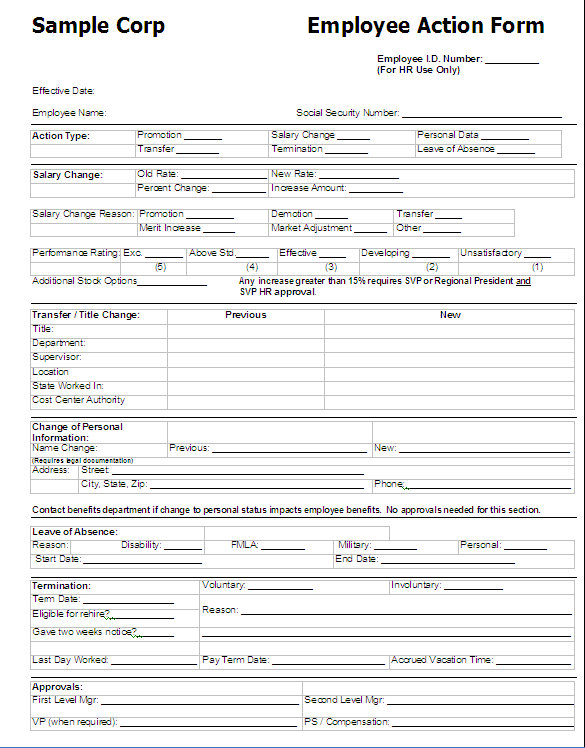Dealing with Firing or Laying off an Employee
One of the most difficult tasks you have to face as a manager is firing employees. This is the part of the job that most people dread. You should not fire anyone unless you are absolutely certain that it is deserved, however, most managers wait far too long to finally fire an employee. If you have provided clear expectations, and have implemented the associated steps and tips that have been discussed in this lesson, you will be justified in the decision and it should come as no shock to the employee. By utilizing all of the leadership and management tools taught in this course, you will have behaved ethically and legally, and again, justified in your decision to fire. Besides, if you do not fire an employee who truly deserves to be let go, you will lose respect within your department.
The employee who, breaks the rules, is not performing up to job expectations, has a poor attendance record, or causes difficulties in the workplace, needs to be let go. It is not good for the organization, and in many cases, it might just be the right thing for the individual. There are times when an employee is almost subconsciously begging to be let go to venture out to new things, but does not want to quit due to job security.
As stated many times throughout this lesson, documentation is an absolute necessity. Even when it is just a verbal consultation, it needs to be documented. Without the proper documentation, you may see yourself in a wrongful termination lawsuit.
HR is your best friend at this juncture and if you have provided full documentation and followed the company guidelines, you will not only look good in their eyes but the firing process will be that much easier. The same applies for laying off an employee, as only a few steps would need to be modified.
Steps to take when firing an employee:
- Hold the employment termination meeting. This is the time when you tap the employee on the shoulder and have them come into your office immediately. Even if they are in the middle of something, once you made the attempt to talk to the employee, it needs to happen right away so that there won’t be anytime for the employee to think about what’s to come. The employee’s supervisor and/or a HR representative should also be present. The IT department needs to be notified as well to lock them out of their computer.
- Don’t be tentative and dance around the subject, just be straightforward, look the employee straight in the eyes, and let them know that you have to let them go.
- Even though it should come as no surprise to the employee, you will probably be asked the question, “Why am I being fired?” State the reason for the employment termination. Have some quick notes prepared to be able to touch the main points. Be calm, quick to the point, and compassionate. Don’t say more than you have to or else the focus might be on a moot point. Keep this termination process as short as possible. You can say something like this:
“As you know from our past conversations, we discussed the importance on meeting the required standards (you can modify as needed to the subject at hand). I think the way we approached and tried to rectify the issue was fair and reasonable. I think I made it pretty clear it was imperative that you met those standards. I don’t believe it was any lack of effort on your part; however, we are going to have to terminate your services as of today. I really wanted this to work out but unfortunately it has come to this point.”
- The employee might want to ask a couple of questions. You will be so prepared that you should feel comfortable to discuss how it got to this point. Don’t discuss it for too long, you want to answer the questions and end the conversation as soon as possible.
- The employee might be acceptable and want to end the experience as soon as possible. If that is the case, you do not need to lengthen the process by continually talking. HR will take it from there to discuss any possible severance pay, last paycheck, vacation balance, health coverage, etc. If, however, the employee is upset and lashes out, don’t lose your cool. Let them get it off of their chest, but just for a short period of time. Make sure you maintain composure, no matter what the employee is saying, and know when to say, “I understand you’re upset, however, we gave you many opportunities to improve so we would not have to be in this position.” Stay compassionate and respectful, and then give a nod to HR that you’ve said all what you have to say and let them take over. They will most likely bring the employee to their office.
- If the employee is not showing any signs of being to upset, you can give some advice on how they can further their skills or find another job through an agency, online, etc. Tell them about their strengths, for example, that they are a team player and should look into a position that utilizes their nice and compassionate personality. If you can build their self-esteem with the employee leaving on a positive note, you have done a great job during this tough assignment.
- If the employee needs to go back to their desk to pick up some personal belongings, you, and preferable a security guard, should be with them at all times. You do not want the employee to explode on the floor, so you want to get in and out as soon as possible. The computer should have been locked down, but just in case, do not let the employee touch the computer. You do not want a company wide e-mail with slanderous remarks going out to everyone. You can always offer to pack up the employee’s belongings and they can pick it up after hours from the HR office.
- HR will most likely meet with the individual in their office to discuss possible severance, when their last paycheck is coming, when benefits terminate, and any information regarding extending their health coverage or any other details. HR will also collect the employees badge, swipe card, and any other needed material. Due to the employee being terminated, this would be considered the employees exit interview. At that point the employee will be walked out of the building.
- Your department will be talking about what they saw and will be anxious to find out what is happening. Explain to the team that the individual is no longer with the company, without going into too many details. Leave it at that. They will figure it out for themselves and you want to be seen as a “quietly strong leader.”
If you have to layoff employees, you can use the same steps as just described, you would just have to modify steps 3 and 4 to fit the reason. This reason for the layoff might be due to your company being part of a merger or downsizing due to financial reasons. It could be because you are just overstaffed. In tough economic times, it should come as no surprise. It will still be quite a shock and you will need to show extra compassion during this tough time.
This might be a little tougher on you, because you might really like the person, and they are being let go for no fault of their own. On the other hand, it might be considered easier to layoff someone because it won’t be due to an attitude issue, poor performance, conflict, etc. In some cases, people actually want to be part of a layoff in order to get severance pay. They might want to start over on another career path or just retire early.
If an employer calls you for a reference from the terminated employee, just state the title and dates of employment. If you give any more information, you might be drawn into a libel suit. Most likely HR will answer these questions, and if the call comes to you, it would be best to just transfer the call to HR.
In some circumstances, firing an employee is an immediate necessity for the safety and well-being of the rest of your employees such as:
- Is physically violent.
- Brings a weapon to work.
- Arrives to work under the influence of drugs or alcohol.
- Views pornographic movies on work computers.
- Steals company property.
You may need to confer with HR first, however, these types of situations need to be dealt with as soon as possible. If you feel that the employee is violent and could be a danger, utilize the same advice given earlier regarding violence in the workplace.
Point to keep in mind. If you work in an organization that is part of a union, the employee should be advised that they are entitled to be represented by a union representative for any requested discipline meetings.







